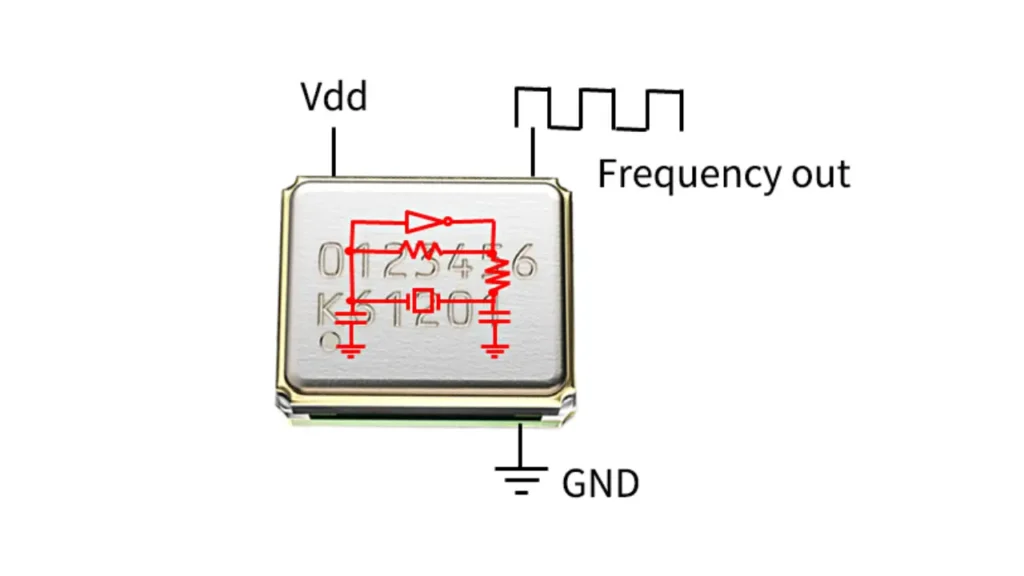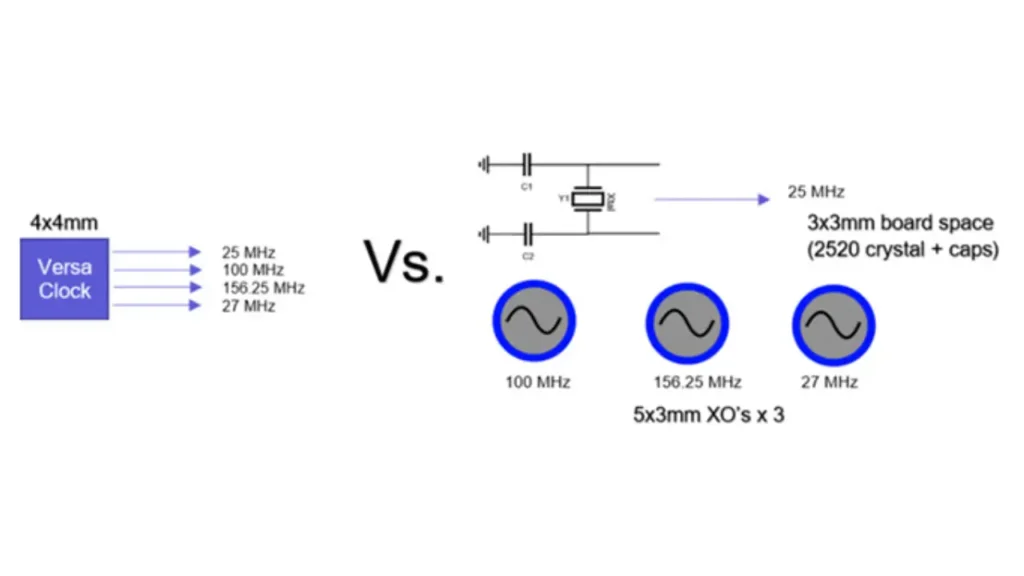Crystal clock oscillators are essential components in countless electronic devices, providing the stable timing signals that govern their operation. They rely on the piezoelectric properties of quartz crystals to generate precise frequencies. This blog will explore the fundamental principles behind these oscillators, detailing their structure and operational mechanisms.
Understanding how crystal clock oscillators function is crucial for anyone involved in electronics design or repair. We’ll delve into the physics of crystal vibration, the role of supporting circuitry, and the factors that influence oscillator stability and accuracy.
What Are Crystal Clock Oscillators

Crystal clock oscillators are electronic circuits that generate a precise, stable frequency signal. They rely on the piezoelectric effect of a quartz crystal, which vibrates at a specific frequency when an electrical voltage is applied. This vibration is then used to create a consistent timing signal, crucial for synchronizing operations within electronic devices.
Essentially, they act as the “heartbeat” of digital systems, ensuring that all components operate in a coordinated manner. From microprocessors in computers to communication devices and consumer electronics, crystal oscillators provide the accurate timing necessary for reliable performance.
What Are Crystal Clock Oscillators Made of?
Crystal clock oscillators are primarily composed of a quartz crystal, an oscillating circuit, and often, a protective enclosure. The quartz crystal itself is a thin slice of silicon dioxide, cut and shaped to vibrate at a precise frequency. The oscillating circuit, usually built with transistors or integrated circuits, provides the necessary electrical energy to initiate and sustain the crystal’s vibration.
Key components and materials of crystal clock oscillators include:
- Quartz Crystal: The core element, providing the stable frequency.
- Oscillating Circuit: Amplifies and maintains the crystal’s oscillations.
- Capacitors and Resistors: Used to fine-tune the frequency and stabilize the circuit.
- Integrated Circuit (IC): In modern oscillators, often integrated for compact design and enhanced functionality.
- Enclosure: Protects the delicate crystal and circuitry from environmental factors.
Crystal Clock Oscillator Types

When discussing crystal clock oscillator types, it’s essential to understand that they are categorized based on their stability and the methods used to achieve that stability. Here are the most common types of crystal clock oscillators:
XO (Crystal Oscillator or SPXO – Simple Packaged Crystal Oscillator):
- This is the basic type.
- It provides a stable frequency output but is susceptible to temperature variations.
- It’s used in general-purpose applications where high stability isn’t critical.
TCXO (Temperature-Compensated Crystal Oscillator):
- These oscillators compensate for frequency changes caused by temperature variations.
- They incorporate temperature-sensing circuitry to adjust the oscillator’s frequency.
- TCXOs offer improved stability compared to XOs and are used in applications requiring moderate stability, such as mobile communications.
VCXO (Voltage-Controlled Crystal Oscillator):
- The output frequency of a VCXO can be adjusted by varying an input voltage.
- This allows for fine-tuning of the frequency and is used in applications like phase-locked loops (PLLs) and frequency modulation (FM).
- They are used in applications that require frequency synchronization.
OCXO (Oven-Controlled Crystal Oscillator):
- OCXOs provide the highest level of frequency stability.
- They maintain the crystal at a constant temperature using an internal oven.
- This eliminates the effects of ambient temperature variations.
- OCXOs are used in applications requiring extremely high stability, such as telecommunications, GPS, and precision instrumentation.
VCTCXO (Voltage-Controlled Temperature-Compensated Crystal Oscillator):
- This type of oscillator combines the abilities of both the VCXO and the TCXO.
- This means that it is temperature compensated, and it’s frequency can be adjusted by a voltage.
- This type of oscillator is used in applications that require both temperature stability and frequency tuning.
Key Considerations:
- Each type offers a different balance of stability, cost, and power consumption.
- The choice of oscillator depends on the specific requirements of the application.
What Are Crystal Clock Oscillators Applications
Crystal clock oscillators are fundamental to a vast array of electronic applications, providing the precise timing signals necessary for reliable operation. Their stability and accuracy make them indispensable in both everyday devices and highly specialized equipment.
Here are some key crystal clock oscillator Clock Oscillator vs Crystalapplication areas:
Consumer Electronics:
- Smartphones and tablets: For processor timing and communication functions.
- Digital watches and clocks: For accurate timekeeping.
- Gaming consoles: To synchronize processing and graphics.
Communication Systems:
- Cellular networks: For frequency control in base stations and mobile devices.
- GPS devices: To ensure accurate satellite signal timing.
- Networking equipment: For data transmission synchronization.
Computers and Microprocessors:
- Motherboards: To provide the clock signal for the CPU and other components.
- USB devices: For data transfer synchronization.
Industrial and Automotive:
- Automotive electronics: For engine control units and navigation systems.
- Industrial control systems: For precise timing in automated processes.
- Medical devices: for accurate timing in critical medical equipment.
Essentially, any electronic device that requires precise timing relies on crystal clock oscillators.
Clock Oscillator vs Crystal

Understanding the difference between a clock oscillator and a crystal is fundamental in electronics design.
- A crystal, typically made of quartz, is a passive component. It exhibits the piezoelectric effect, meaning it vibrates at a precise frequency when an electrical voltage is applied.
- A crystal itself does not generate a clock signal. It requires an external oscillator circuit to function. This circuit, often built into microcontrollers or other ICs, provides the necessary feedback to sustain oscillation.
- Crystals are known for their high accuracy and stability, making them suitable for applications requiring precise timing.
Clock Oscillator:
- A clock oscillator, on the other hand, is an active component. It integrates a crystal with the necessary oscillator circuitry within a single package.
- This means a clock oscillator produces a complete clock signal when powered, eliminating the need for external circuitry.
- Oscillators offer convenience and simplified design, but they may come at a higher cost and consume more power compared to crystals.
Key Differences and Considerations:
- Essentially, a crystal is the core resonating element, while an oscillator is a complete clock source.
- Crystals are generally less expensive, but require additional components. Oscillators are more expensive, but simplify circuit design.
- Oscillators often provide better stability over temperature variations and are less susceptible to external noise.
- When choosing between the two, factors such as cost, accuracy requirements, design complexity, and power consumption must be considered.
Here is a simple chart to know the differences between crystal and clock oscillators.
| Feature | Crystal | Clock Oscillator |
| Type | Passive | Active |
| Function | Resonator | Clock signal generator |
| Components | Crystal only | Crystal + oscillator circuit |
| Complexity | Requires external circuit | Self-contained |
| Cost | Lower | Higher |
| Power Consumption | Lower | Higher |
| Accuracy | High | High |
| Design complexity | More complex | Less complex |
Conclusion
Crystal clock oscillators are vital for precise timing in today’s electronics. Understanding their core functions allows engineers to optimize system performance through effective selection and utilization. These devices ensure the accuracy required for countless applications, from consumer gadgets to industrial systems.
For dependable, high-quality crystal clock oscillators at wholesale prices, explore the offerings from Weishi Electronics. We provide a diverse range of options tailored to meet your specific project requirements.